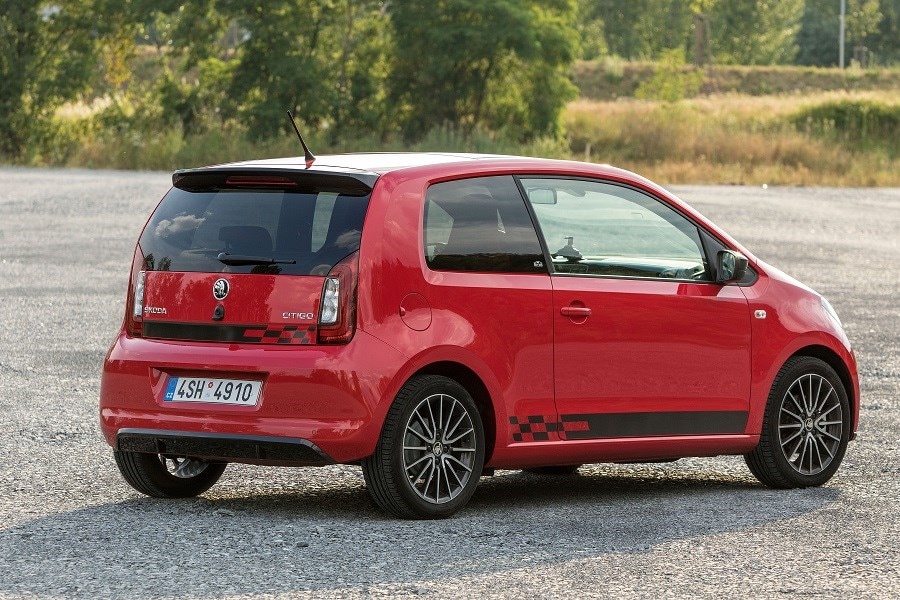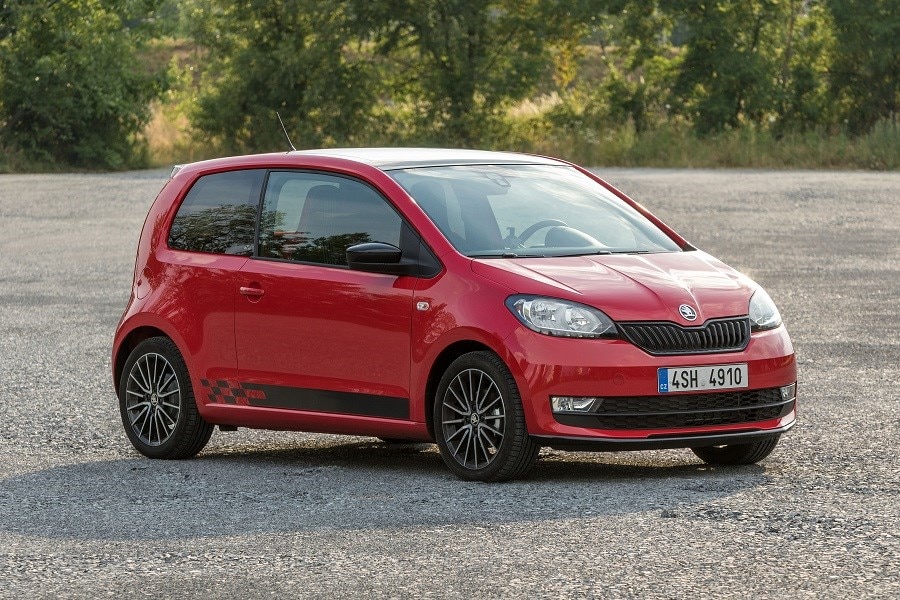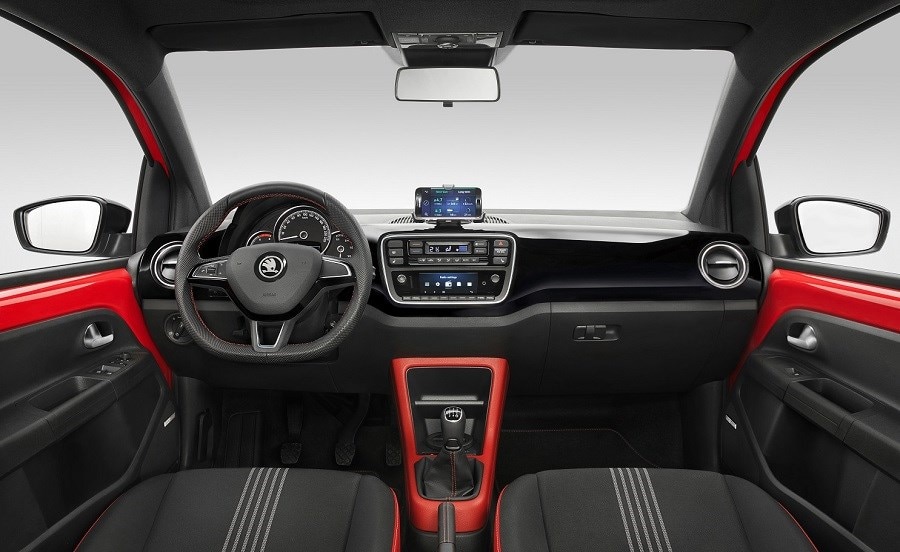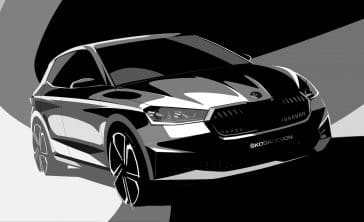Model Review
The Citigo is part of a trio of city cars launched by the Volkswagen Group in 2011, which shares the majority of its powertrain and architecture with the VW Up! and SEAT Mii. All three debuted at the Frankfurt Motor Show that year.
The initial model range was simple – Volkswagen’s version had the most colour, trim and powertrain options, while the slightly cheaper Skoda and SEAT models would offer a little less choice, but a smidgen more value.
In reality, there’s very little to choose between the three, and you’d be better off making the judgment based on what you’re offered in terms of the overall deal or finance package.
The Skoda differs from the other two cars only in its front-end styling, which has Skoda’s traditional ‘waterfall’ style grille and slightly wider headlamps; dynamically it’s identical.
Mechanically all three are also the same and each offers the same three-year, 60,000-mile warranty package. They are built together on the same assembly line in Bratislava, Slovakia.
Latest model
The Citigo got a bit of a nip and tuck in 2017 to bring it up to date. It was nothing drastic, though with just the headlights, grille and bumper being redesigned alongside a few minor interior tweaks, the rest of the car stayed essentially the same.
At the same time as the minor facelift, Skoda also introduced automatic city braking as an option, which helps prevent low speed traffic accidents by automatically putting the brakes on to avoid bumping into the car in front.
Overall, the Citigo is a fun little car with plenty of character, although it’s not quite as bright or vibrant as the Volkswagen or SEAT variants, which are marketed at a slightly more youthful target buyer.
Value for money
Value for money is key to any car’s success at this level of the market, and the Citigo scores well in this department, with entry-level pricing starting at less than £8,500. But be warned—at that price level, specification is about as basic as it possibly gets.
The range is simple, a handful of trim levels and two variants of the same 1.0-litre engine with either 60bhp or 74bhp, both of which are cheap to run.
Move up the range and the specification gets much better, while still representing good value compared to a number of rivals.
Looks and image
The Citigo isn’t going to win any beauty prizes, but by the same token, it’s not unpleasant to look at.
The 2017 facelift’s new bonnet, lights and grille give the front end a slightly sleeker and more aerodynamic appearance than before, but its sub four-metre length restricts the rest of the styling to nothing other than boxy. But, with that said, it manages to be boxy with a level of chic.
It’s well finished, too - the Citigo might not be a big car, but it feels like a well put together one, and that’s where it really scores.
The interior, in particular, feels solid and secure. The plastics are a bit hard and shiny, but nothing feels like it’s about to rattle or fall off, plus the chunky steering wheel and neatly integrated stereo look the part. SE models upwards also get a smartphone holder, so you can import your apps to the car’s infotainment system.
The range-topping Monte Carlo model deliberately feels a bit sportier, with black and red upholstery seat trim, a red centre console and a piano black finish on the dashboard.
Space and practicality
The Citigo is rare in the city car segment in that it’s available as both a three-door or a five-door, rather than one or the other.
The tidy but minimalist cabin is surprisingly spacious, with plenty of room for even the tallest of drivers to stretch out comfortably. All versions above the £8,500 base spec also have a height-adjustable driver’s seat.
There’s also room for two adults in the back - just about - so the five-door is a surprisingly useful vehicle, especially when you consider that the back bench also features a brace of ISOFIX mounting points for child seats.
There’s a fair amount of cabin storage, too, with deep door bins and a large glovebox, along with netted pockets on the side of the front seats.
The boot’s not huge but it trumps most of its rivals thanks to 251 litres of space when the seats are up. This rises to 953 with them dropped all the way down. You’ll get a decent amount in there if you put your mind to it, but bear in mind that the base model only has a single-piece bench seat and not a 60:40 split.
Engines
The Citigo comes equipped with a 1.0-litre engine, which powers the front wheels via a conventional five-speed manual or five-speed automatic transmission; the latter of these is extremely rare and also not the car’s finest hour, thanks to indecisive and jerky changes.
There are two power outputs; 60bhp and 74bhp. The former of these, which is offered on the entry-level S and the SE, is fine if you’re just zipping around town and helps keep the entry-level price down. However, it soon runs out of puff at higher revs.
It gets from 0-60 in 14.4 seconds and on to a top speed of 100mph; that will be enough for some.
Moving further up the range, the 74bhp unit doesn’t look that much quicker on paper—0-60mph in 13.5 secs and with a top speed of 107mph —but in reality it feels like a much more flexible engine thanks to far better mid-range torque.
Things to look for
So far, the Citigo has proven to be quite reliable, with very few reported faults even in 100,000-mile examples, which do exist. The model has had a few recalls, one for a passenger side airbag activation issue, another for child locks that might disengage, and a third for panoramic roofs at risk of becoming detached on models so-equipped.
Rivals
The VW Up! And SEAT Mii are the obvious Citigo rivals, but other extremely competent alternatives include the Fiat Panda, Vauxhall Viva, Citroen C1, Peugeot 107 and Toyota Aygo. You should also take a look at some of the Korean offerings, namely the Hyundai i10 and Kia Picanto.
Running Costs
The Citigo is a cheap car to run as well as a cheap car to buy, and the 1.0-litre petrol engine is both simple and easy to maintain; plus, it’s very frugal at the pumps.
The 60bhp model should return around 65.7mpg, while the 75bhp version will achieve 67.3mpg - both of which are impressive figures for a petrol-only engine range.
Depreciation
The Citigo has been around long enough now for there to be quite a lot of choice on the used market, which means higher than average mileage or less than immaculate examples will be affected accordingly. But good models are still in very good demand, and will retain around a third of their value after three years.





